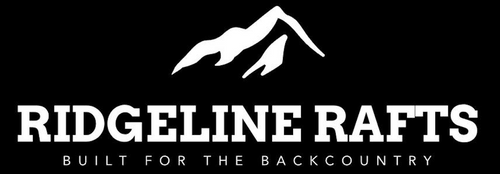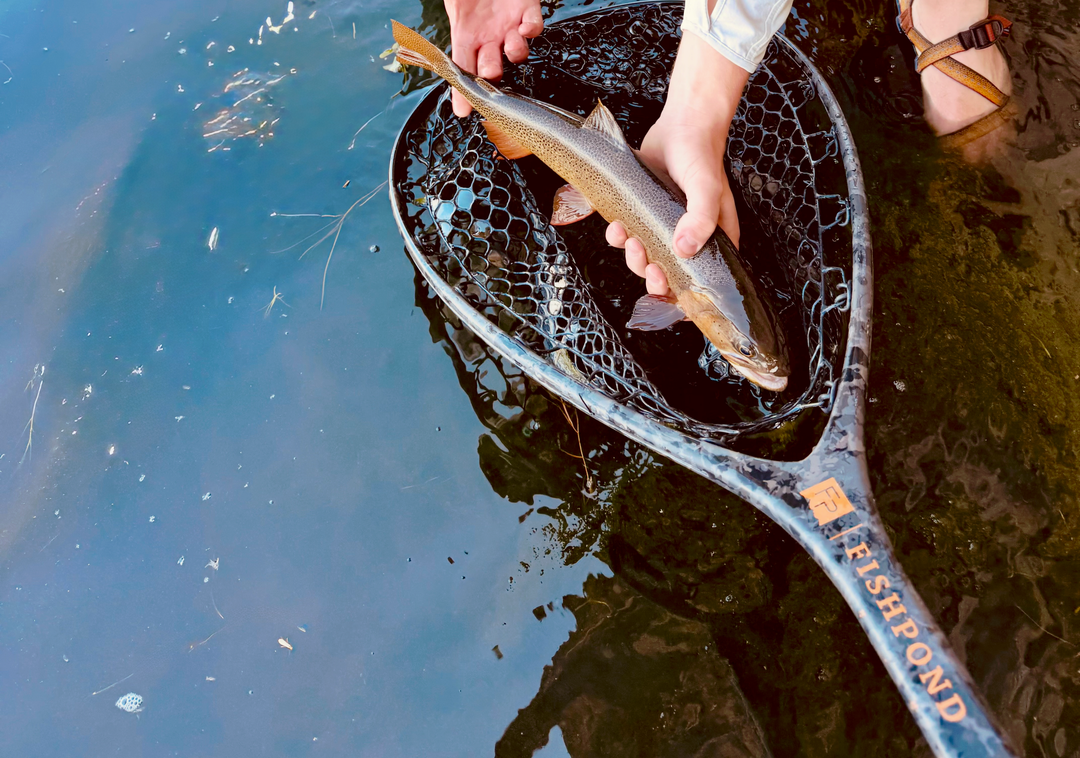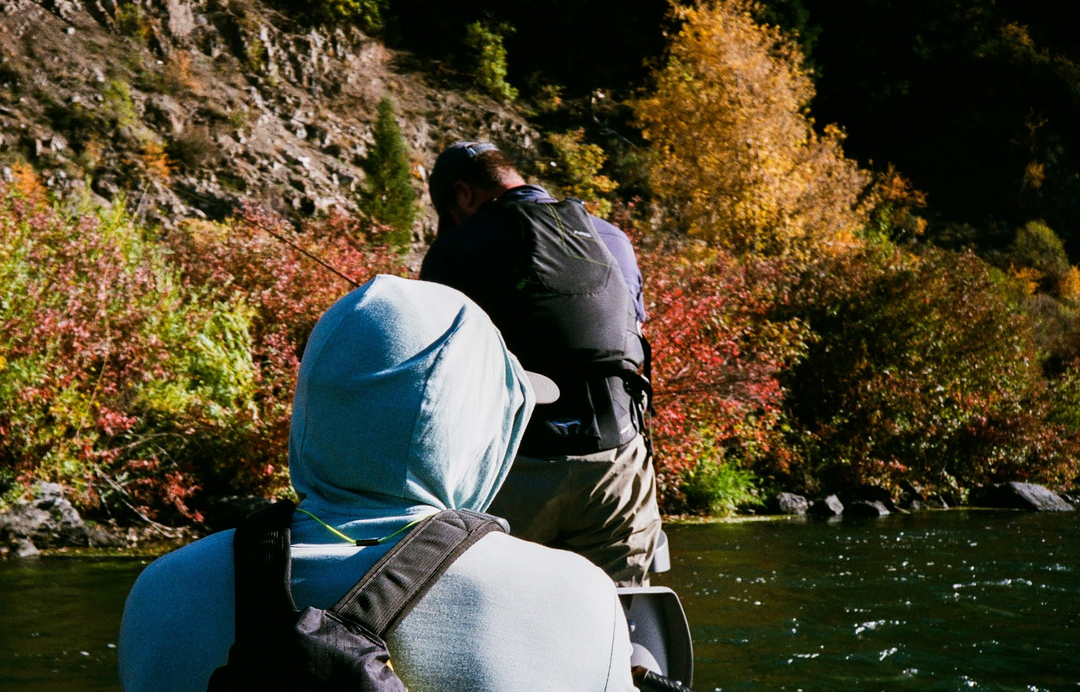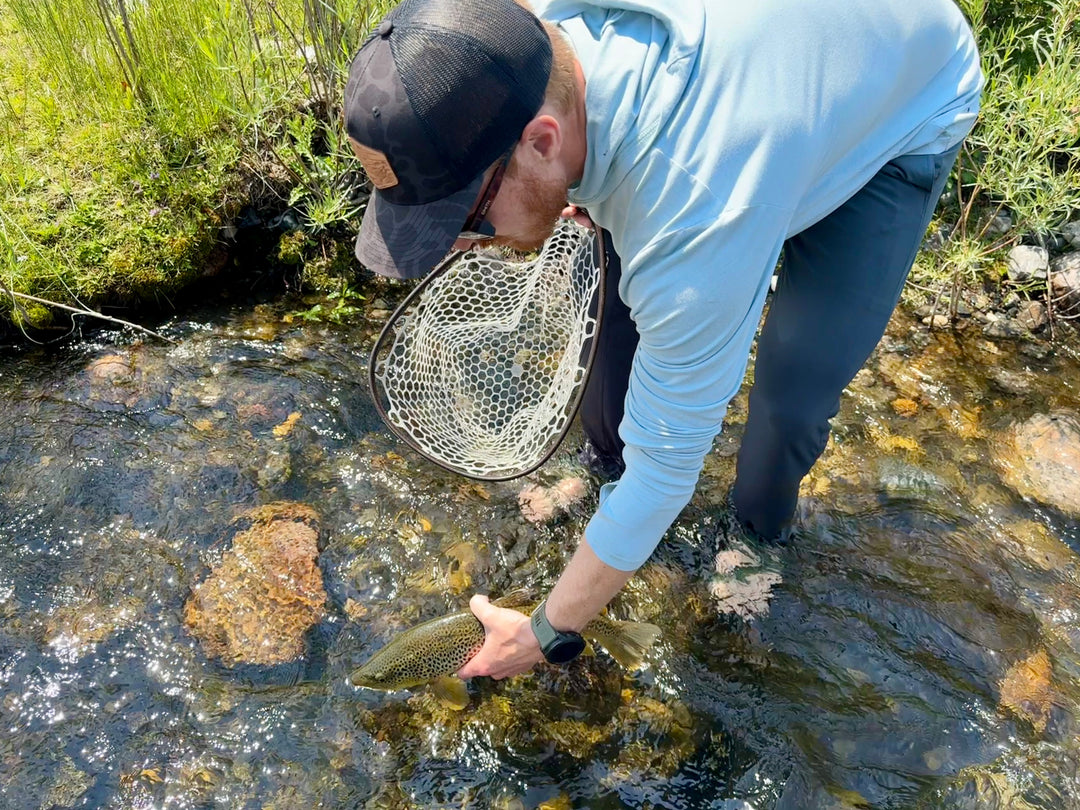Raft vs Kayak For Fly Fishing

Fishing is a beloved pastime that offers a variety of experiences, from fishing grandpas pond to calm lakes or the icon trout waters of the Rocky Mountains. After a couple years of chasing trout or bass while walk and wade fishing a lot of individuals and families start looking at trying to find a boat or personal watercraft to expand their adventures and break away from being stuck on shore.
Once the search for a boat begins you’ll find there can be an overwhelming amount of watercraft available that all seem to offer you the escape from shore, but which is best? Choosing the right watercraft can significantly enhance your fishing trips, making them more enjoyable and productive. Inflatable boats, drift boats, and kayaks each bring unique features to the table.
A common comparison we get at Ridgeline are between inflatable fishing boats and rigid or inflatable kayaks. For the sake of this article we are only going to be primarily comparing rigid kayaks - while inflatable kayaks are super cheap they are essentially useless to try and fish most water safely. Inflatable boats are ideal for family outings, recreational floats, and also for the serious angler due to their durability, ease of setup, and overall reliability.
The differences are more than surface-level. While both offer portability and access to water, inflatable fishing boats—specifically designed rafts—offer undeniable advantages for serious anglers. From stability and space to gear capacity and a better presentation for your fly, rafts are purpose-built for fly anglers who want to fish better, longer, and more comfortably at a fraction of the rate of a classic drift boat.
What to Consider When Looking for a Fishing Boat
When selecting the right watercraft, it's crucial to consider various factors such as size, weight capacity, and intended use. Whether you're looking for a kayak, canoe, or john boat with a trolling motor, understanding the specific needs and limitations of each type is essential. For instance, kayaks are great for solo adventures and navigating narrow waterways, while canoes offer more space for gear and additional passengers.
At Ridgeline we make high quality rafts designed for the most dedicated anglers that are getting out whenever they possibly can. We're serious about fishing and create a product that enhances your experience on the water in a way other watercraft cant. In our opinion, kayaks just aren't built and designed for fly fishing and this article will help you better understand in greater depth some of the strengths and weaknesses of a kayak compared to an inflatable boat.
Where Kayaks Have the Advantage
Portability & Setup Time:
When comparing inflatable rafts and kayaks for fly fishing, both options check the box for portability. Rafts can be deflated and packed down to fit in the bed of a pickup or the back of an SUV so you don't need a trailer, although a trailer makes transportation an absolute breeze. Kayaks are generally small and particularly skinny (typically less than 3' wide). This smaller size makes it easy to throw in the bed of a truck or on top of a vehicle for almost anyone so transporting them is pretty easy.
The beauty of a kayak is their simplicity. This tends to really appeal to the solo fisherman as most kayak fishing doesn't involve 2-3 people per boat. This makes kayaks a solid choice when fishing for trout or bass in lakes with equipped with a motor mount and motor or paddle or slow moving water.
Park the truck, pull the kayak out of the bed and push off into the lake. If the bulk of your fishing is solo on lakes then a kayak (and potentially even a inflatable kayak if you're fishing spinning rods or bait casters) could be the best option for you! Most people's trout fishing isn't tied to still water and a kayak's features and capabilities becomes extremely limited, especially in the trout mecca of the Rocky Mountain West.
Unfortunately transportation and weight is the only upper hand that a kayak has in this comparison.
Where Inflatable Boats have the Advantage
Once we get off shore and start looking at on the water performance for fly fishing, the raft vs kayak debate swings heavily in favor of the inflatable boat. All the features combined together make a boat that is purpose built to handle anything the world of trout fishing (and most white water expeditions) can throw at it. Inflatable boats can be effectively fished in various water environments, enhancing the fishing experience by allowing anglers to reach remote locations where less pressured fish are more likely to be found. We’re going to look at the 3 core areas that drive this substantial advantage and why you should be looking for these in your first, or next, boat.
Key Advantages:
-
Stability: How a stable watercraft makes fishing easier
-
Access: You need to get to where the fish are and an inflatable fishing boat puts you where you need to be
-
Comfort: We acquire a lot of additional gear when we start fishing from a boat and comfort plans a big factor when you’re spending hours or days on the water.
1. Stability: Stand, Cast, Land Fish with Confidence

Why an Elevated Position on a Boat is So Important
The biggest performance gap between inflatable boats and fishing kayaks is the position and angle relative to the water, specifically standing. Standing while fishing gives you the best view of the water and enables a much better presentation (absolute key in when targeting trout). Very few people are comfortable standing in kayaks because they are so narrow and easily tip, especially in windy conditions, which forces you to sit level with the water. Fishing kayaks that are designed to be able to stand still can’t eliminate the tippy feeling entirely and they can be shockingly expensive ($4,000+). Not only is this a frustrating experience, but its also can be a safety concern depending on the water you are floating.
The floor of the boat plays a crucial role in providing the stability needed for standing and fishing. Most inflatable fishing boats have self-bailing floors made from a rigid dropstich material , which can significantly impact the boat's stability, performance, and overall functionality. The inability to stand (even siting in a raft you’re still 1-3’ higher than the water giving you and advantage if you are older and need to sit) hamstrings you in two primary ways: visibility and presentation.
Visibility
Being able to stand gives you a much better view of the water, the structure of the river, and what is coming up ahead. This allows you to make more educated casts and decisions that will increase your odds of a hook up. When your butt is at or below water level in a kayak you may try casting to a bank, but you’re unable to see it’s an inch deep sand bar that realistically isn’t going to hold trout, whereas you would never try to cast there if you were standing because you can visually see very little water that would hold trout (sitting at this angle also makes it harder to set the hook as you have less leverage). We’re always looking for an odds multiplier - meaning putting our flies in the spot most likely to hook a trout - and the ability to see where you’re casting is a huge multiplier.
The design of the bow in inflatable boats, often constructed to tilt upward, enhances the rowing experience, especially in rapids, as well which makes it easier for the rower to get the angler into a better position to fishing spots and navigate effectively.
Presentation
While getting an inflatable boat will increase your catch rate, generally speaking the biggest impact to success is your presentation (on foot or in a boat). What are the elements of a quality presentation?
-
Accuracy: Putting the fly where it needs to be.
-
For instance: when fishing streamers or hoppers at a bank you need to drop that fly 2 inches from shore. Getting your fly 6 inches from shore might as well be 4 feet from the shore.
-
-
High quality drag free drift: Ensuring your fly is floating as naturally as it possibly can increasing the odds of fooling a trout
When sitting in a kayak just casing alone becomes quite challenging due to the angle your rod has to make which limits your ability to be both accurate and have a quality drift. This is why having the ability to stand is so important for fly fishing. You're only able to stand if you have a boat that can keep you from diving headfirst into the river constantly. With kayaks being so narrow this is incredibly challenging to be stable enough to cast on the rivers we have out West.
Self bailing inflatable boats on the other hand are built with stability in mind. Their wide footprint and drop-stitch floors create an incredibly stable platform that gives the confidence to move around, stand up, and fish without feeling like they’re walking a tightrope. Stability isn’t just about the ability to stand—it's about the performance benefits you get from standing. A stable platform directly affects your ability to deliver accurate casts, achieve natural drifts with better line control, and ultimately land more fish (not to mention more power and precision when casting into those notorious Wyoming winds). Whether you're drifting a big western river or creeping through shallow riffles, the ability to stand, cast, and fight fish with confidence can be a game-changer
If you want to stand up, cast with accuracy, and confidently manage your line while landing fish, a inflatable fishing boat is the clear choice. Stability equals better presentation—and better presentation catches more fish.
2. Access: More Water, More Fish
In fly fishing, boat control and access are everything. It’s not just about floating from point A to point B—it’s about the rower being able to position the angler(s) for a good cast, maintaining a natural drift, and adapting your angle on the fly. The more control you have, the more fish you’ll catch as you stack odds in your favor.
Inflatable rafts, especially those with a proper rowing frame, give you unmatched control in moving water. You can slow your drift through prime runs, backrow into better position, ferry across currents, or spin the boat to give your partner the ideal shot—all things a paddle-powered kayak simply can’t do. This means longer drifts, better presentations, and more time with your fly in the strike zone.
Rafts also give you access to every water body that kayaks and drift boats struggle with. They handle rocky rapids, shallow water tailouts, and remote stretches with ease. Ridgeline rafts feature self-bailing floors and rugged materials, so you're ready for rocks, rain, and rough conditions.
Once rigged, a raft becomes your mobile fishing base. Spacious for two or three anglers, a cooler, dry bags, safety gear, and even a or anchor system, you can fish longer, adjust tactics on the fly, and stay with the fish wherever they go. Whether you’re sneaking into skinny water, running rapids, or exploring big lakes, rafts offer the versatility to handle it all. If you want to access more water, fish more effectively, and stay comfortable all day, a raft is the way to go. Better boat control means more shots at accurate casts and better drifts—and better drifts mean more fish in the net.
3. Comfort and Capacity
Choosing the Right Watercraft for Fly Fishing
Fly fishing is a unique and challenging form of fishing that specific types of watercraft can maximize success. When selecting a watercraft for fly fishing, stability, maneuverability, and accessibility are key factors to consider. A stable and maneuverable watercraft allows you to cast and land fish with ease, making your fishing experience more enjoyable and productive. But fishing isn't all about performance - it's also just about enjoying your time on the water and the more comfortable you are the more enjoyable those experiences are.
Comfort on the Water
When you’re spending long hours on the water—or even a full weekend float—comfort isn’t a luxury; it’s a borderline necessity. The ability to move freely, relax between casts, and avoid cramping up can make a huge difference in how enjoyable and productive your day is. That’s where inflatable rafts take another jump in the lead.

Rafts are built with fisherman in mind. Wide, stable platforms allow two people to fish without crowding each other, whether you’re both standing to cast or one is seated and scouting for risers. You can stretch your legs, switch positions during the day, or stand up and move without compromising balance—something kayaks just can’t match.
Comfort also means better seating options. Whether it’s padded swivel seats, high-back rowing seats, or standing platforms with lean bars, rafts can be dialed in to match your style and the water you’re fishing. Compare that to a kayak, where once you’re squeezed into the molded seat, you’re stuck. Limited movement, minimal back support, and awkward casting positions are fine for short trips—but not ideal for a full day chasing fish.
Storage Capacity
Rafts don’t just keep you comfortable—they simply have more room to carry what you need to stay out longer and fish smarter. Plenty of room for accessories like rod holders for multiple set ups, boat boxes, a cooler, dry storage, safety equipment like throw ropes, PFDs, and first aid kits without sacrificing legroom or balance. Ridgeline rafts are especially optimized for this kind of setup, with smart frame designs that all you to customize your gear organization for two anglers or three.
This extra capacity isn’t just about convenience—it’s about being prepared and increasing your odds of success. Want to bring multiple fly rods for different tactics? A raft makes it easy. You can carry backups, switch setups quickly, and adjust to the river without compromise. We actually wrote an article that touches on this which you can read here.
Kayaks, on the other hand, are compact by design—which means you’re sacrificing storage space. There’s usually limited room for accessories, gear, let alone a cooler, dry box, or second angler. Once you load up, space gets tight fast. On longer floats or when the weather shifts, that limited capacity can turn into a real constraint.
The Final Word: Why Serious Anglers Choose Rafts
At the end of the day, both kayaks and rafts have their place on the water—but if you’re serious about fly fishing rivers, the best choice is a self bailing inflatable fishing boat for your adventures. Rafts offer superior features, stability, better presentation, greater access, more space, and the kind of comfort that lets you focus on fishing—not fighting your boat. Whether you’re planning a quick evening float or a multi-day trip through technical water, a well-designed raft gives you the confidence and control to fish harder, stay longer, and enjoy every minute out there. Rafts are suitable for different group sizes, including one-person and multi-person options. They are ideal for outings with friends, enhancing the shared adventure experience.
For anglers and families who want to elevate their game and unlock more water, there’s no better platform than a raft built for fishing.




